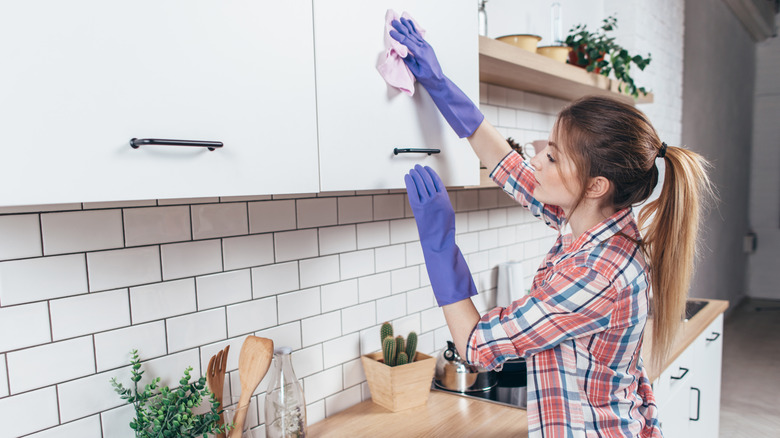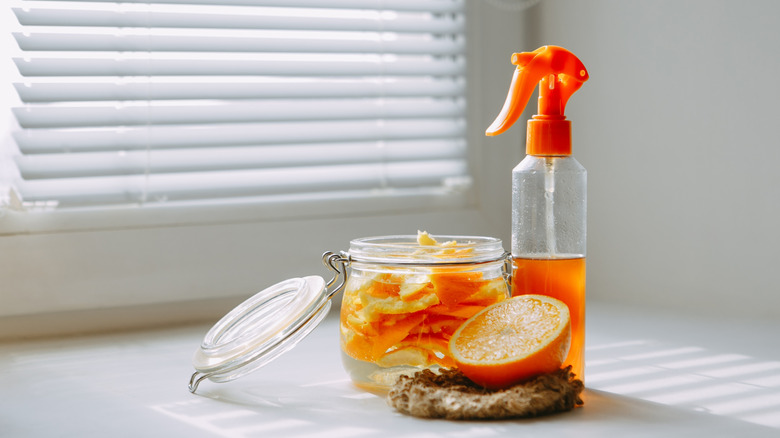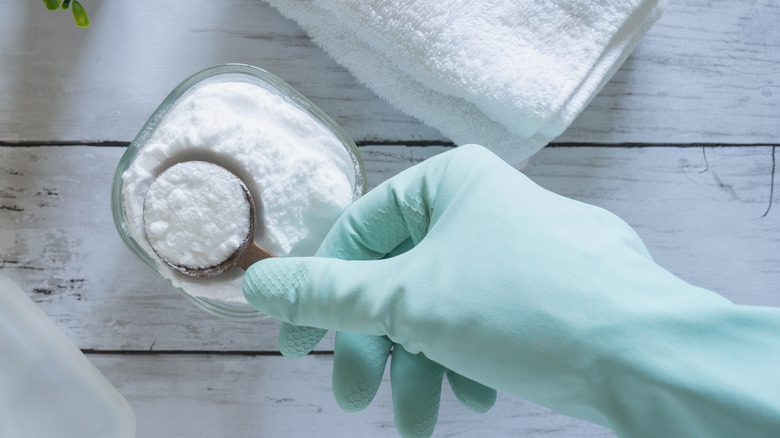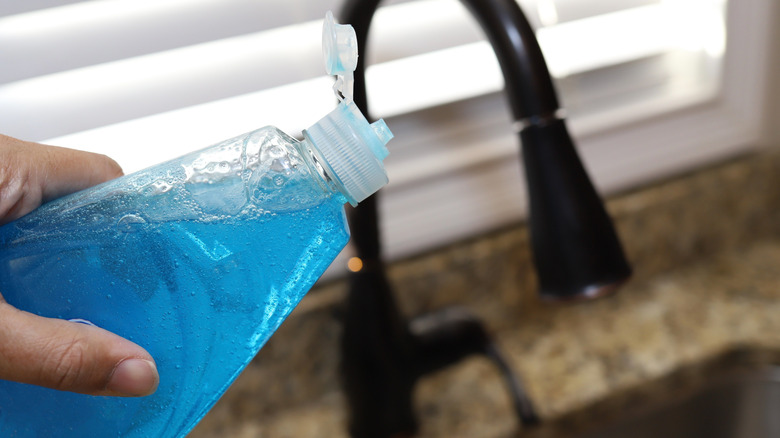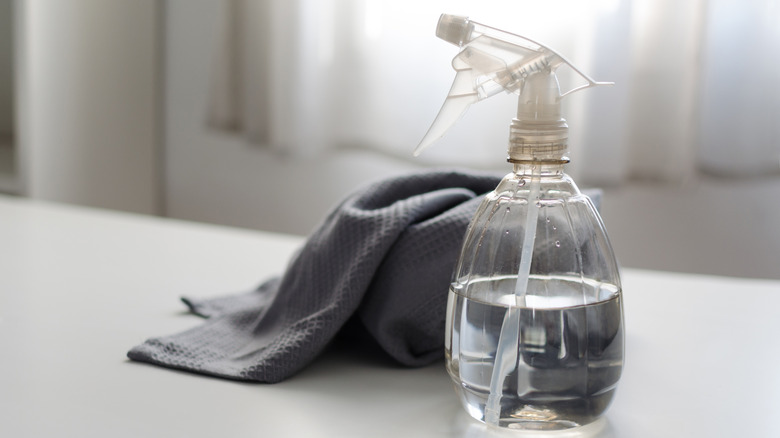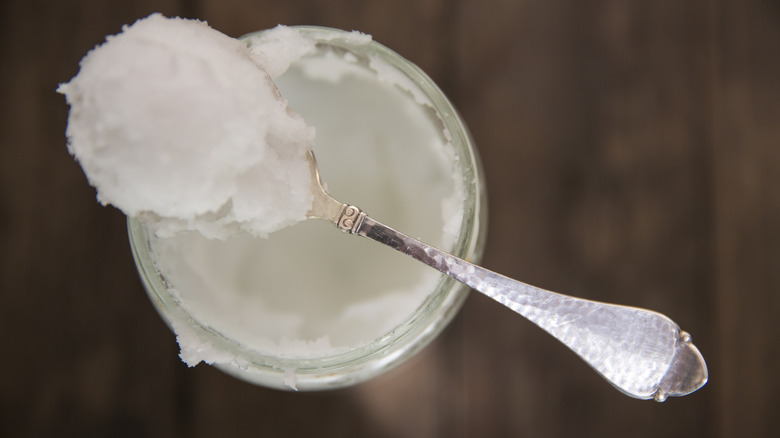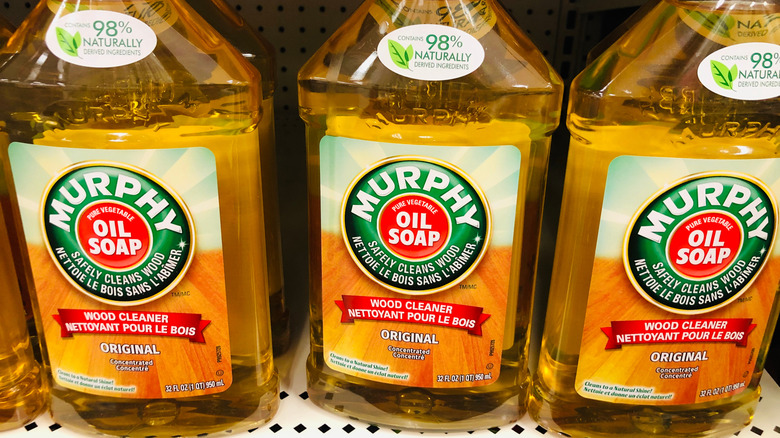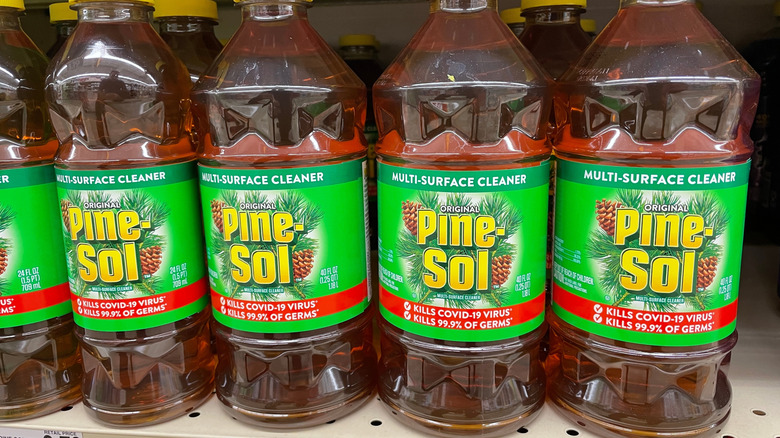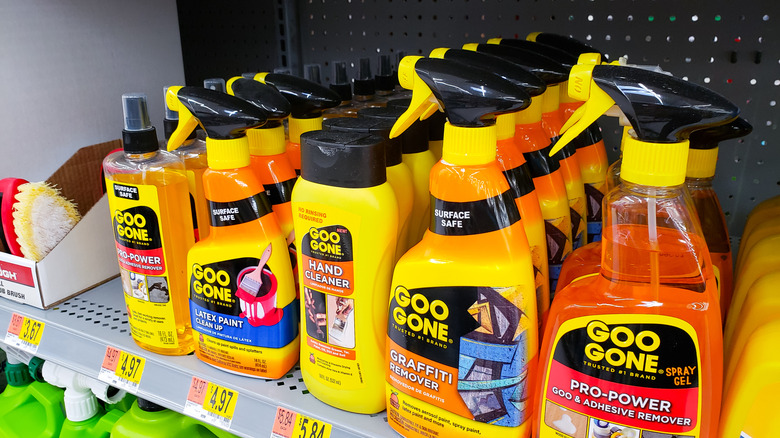Degreasing Kitchen Cabinets Is A Breeze With These 8 Hacks That Work Like Magic
We may receive a commission on purchases made from links.
Grease on kitchen cabinets isn't anything unusual or out of the ordinary, especially if you cook often. Everything from splatters from the stove to greasy hands opening doors can transfer that residual stickiness onto your cabinet surfaces. Grease can also get airborne while you're cooking, and eventually those particles settle on to all surfaces, including your cabinets. So rest assured, you're not a messy cooker; grease build-up is just the measure of a well-loved kitchen. But loving a kitchen also means keeping it well-maintained, and your cabinets are likely an item in the kitchen that you should clean more often. Luckily, cleaning that grease off can be an absolute breeze with these household hacks.
While the exact solution for cleaning your kitchen cabinets can largely depend on what kind of cabinets you have — for instance, laminate cabinets won't respond well to abrasion while wooden cabinets shouldn't be exposed to too much moisture — these hacks represent a number of different ways you can approach degreasing your surfaces. From vinegar to citrus-based cleaners, use whatever hack your cabinets respond well to. Whichever the hack, though, remember to avoid applying any of these materials straight on to cabinet hardware, hinges, or other metallic finishes since they can actually work against the health of those materials. Also remember that using solely a damp cloth will not be effective against grease as water and oil do not mix. However, using any of the following solutions should do the trick.
DIY citrus cleaner
The orange peel hack is a fresh solution for your cabinets since citrus is acidic and effective at cutting through grease. To create an all-natural DIY orange cleaner, you'll need a spray bottle, white vinegar, citrus peels from a mixture of orange, grapefruit, and lemons, and a glass jar. If you're in a hurry, this DIY may not be for you, since you'll need to steep the citrus peels in vinegar in the jar for two weeks. Once the vinegar turns a dark orange, your solution is ready to be strained, diluted with an equal amount of water, and transferred to a spray bottle.
A baking soda wipe down
There are many clever ways to use baking soda for a cleaner kitchen. It's one of those household items that can help in a number of cleaning hacks due to its mildly abrasive nature. To degrease kitchen cabinets, simply shake some baking soda onto a dampened towel, like a microfiber cloth, and lightly wipe the cabinet surfaces. Once the cabinets are adequately cleared of any stickiness, take another clean damp cloth and carefully swipe any remaining baking soda away. To make sure your cabinets are fully dry, do one last wipe down with a dry towel.
Dish soap and warm water solution
Dish soap is meant to cut through grease on our dishes, so it's only logical that it can be applied elsewhere to tackle grease, too. A solution of warm water and mild dish soap should be a part of your regular kitchen cleaning regiment to keep your cabinets fresh. Gently apply the solution to your doors with a cloth or sponge. If you're facing a particularly tough layer of grease, create a paste with baking soda and water and spread and let it sit for a few minute. Wipe again with a clean, damp cloth for sparkling cabinets.
Vinegar-water solution, a DIY classic
Vinegar and water is a classic DIY solution that makes for a great universal cleaner in the home. It's effective against grease namely due to the vinegar's acetic acid composition. Make a 50-50 solution of vinegar and water in a spray bottle. Spray directly onto the cabinet, and let it set for several minutes. Wipe the vinegar solution off with a damp cloth or sponge and then dry the cabinet off with a towel. If other natural cleaners aren't working against those tough build ups, then this vinegar one might do the trick.
A coconut oil concoction
Baking soda works in tandem, once again, with this unexpected household item to create a natural cleaning solution. While it may feel antithetical to put more oil onto your cabinets, when mixed with baking soda, coconut oil helps dissolve grime and get rid of dust buildup. Mix one part coconut oil with another two parts of baking soda together in a jar, and then apply the mixture on to the cabinets with a sponge or a cloth. Spread evenly and rub. To get into corners or inlays, use a toothbrush. Rinse the oil away, and wipe the surface with a clean cloth one more time.
Murphy Oil Soap for wooden cabinets
Wooden cabinets can be tricky to deal with because of the material's finishes and overall response to excess moisture or water, so this hack using Murphy Oil Soap, a wood cleaner, may be a safer bet than other options. Fill a bowl or bucket with some warm water and then pour in some Murphy Oil Soap. The solution should look a little cloudy due to the oil. Take a soft cloth and dip into the solution, then apply it straight to the cabinet surface and wipe it away with a clean cloth.
Pine-Sol as a cabinet cleaner
If natural solutions aren't quite doing the trick, try turning your attention to other household cleaners. Pine-Sol, a tried and true method for cleaning wooden floors, can also be used to rid your cabinets of stubborn grease. To use it effectively, dilute the Pine-Sol with water, approximately an eighth cup of Pine-Sol with 1 gallon of water. Use a sponge with the solution, working it onto the cabinets carefully. The Pine-Sol-dipped sponge should swipe away the grime. Wipe with a damp cloth to rinse the solution off, and then dry the doors with another clean towel.
Goo Gone for tough stains
Understandably, if you haven't cleaned your kitchen cabinets in a while, you'll have some pretty stubborn grease stains to deal with. If the stickiness persists, even after using these other hacks, then bring out the fire power with the Goo Gone Degreaser, a formula that's meant to tackle persistent grime. Using a damp cloth, apply the Goo Gone straight onto the build up spots, and then let it stand for 30 seconds. Wipe it off with a dry cloth, and then clean any residual Goo Gone with a small amount of soap and water before drying again.
